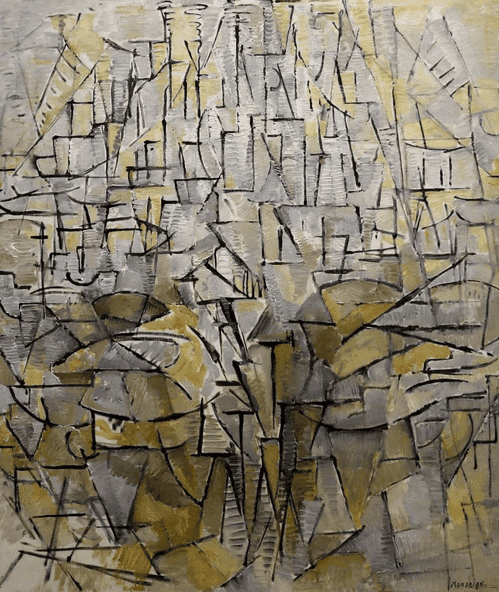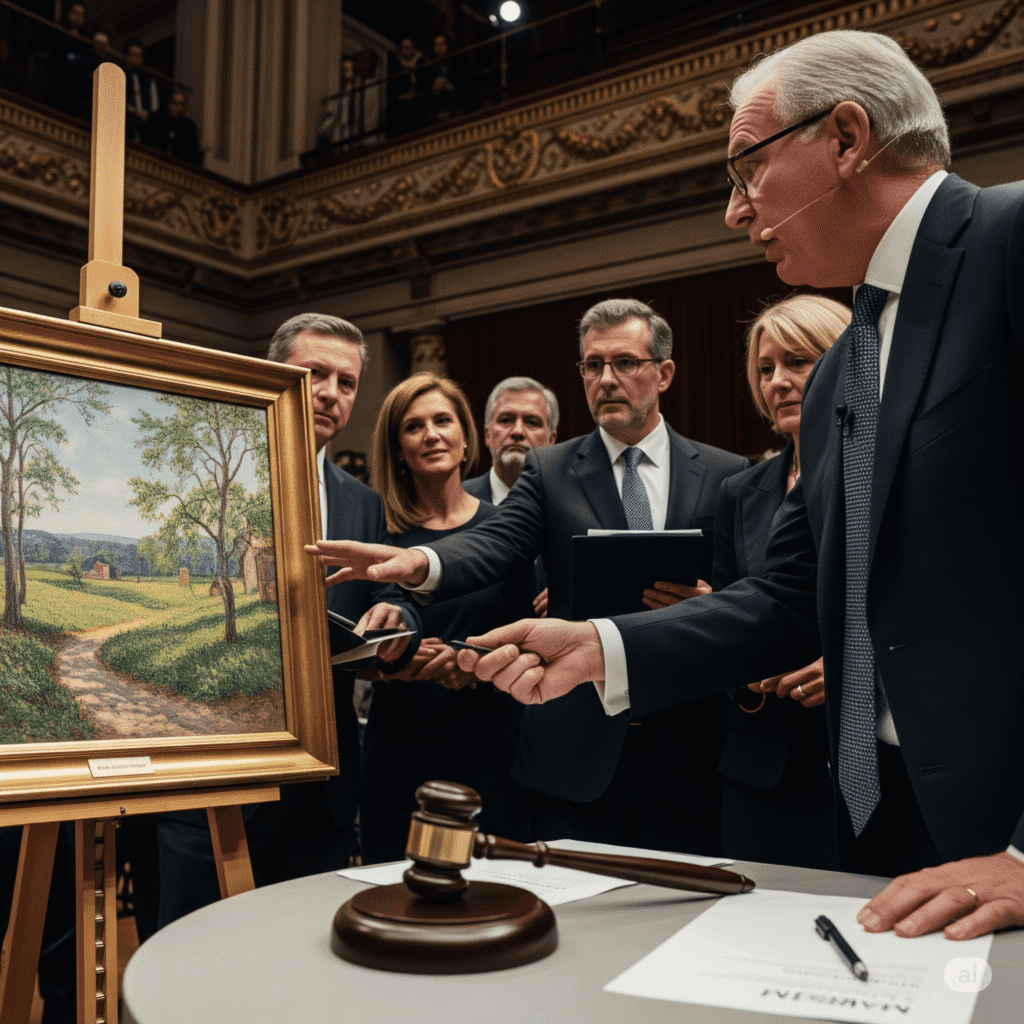How Street Art is Taking Over the Global Art Scene
Introduction
Once considered a form of vandalism, street art has transcended its rebellious roots to become a respected and celebrated component of contemporary culture. Today, street art is not only transforming urban landscapes but is also making bold appearances in global art fairs, galleries, and museums. The evolution of street art is one of the most fascinating shifts in the modern art world—a testament to how grassroots expression can redefine what we call “fine art.”
In this blog post, we explore how street art is taking over the global art scene, from its humble beginnings to its current place in the spotlight. We’ll delve into its cultural significance, major artists, and its influence on the traditional art world.
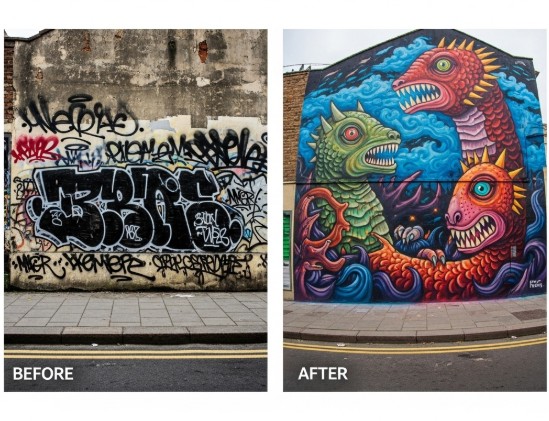
The Origins of Street Art
A Brief History
Street art as we know it today began gaining traction in the 1970s and 80s, particularly in cities like New York and Philadelphia. Graffiti artists would tag subway trains and building walls with pseudonyms, making political statements or simply expressing their identities.
As technology and communication evolved, so did the reach and visibility of this art form. With the rise of hip-hop culture and urban activism, graffiti transformed into an expressive and powerful movement that became deeply embedded in city life.
Key Movements:
- Graffiti: The earliest form of street art, focused on typography and tagging.
- Stencil Art: Pioneered by artists like Blek le Rat and later Banksy.
- Muralism: Large, detailed wall paintings often with political or cultural messages.
- Paste-Ups & Stickers: Quick-to-deploy forms of art for rapid public consumption.
Street Art Meets the Mainstream
The line between street art and fine art has blurred dramatically in recent decades. Street art’s boldness, accessibility, and cultural relevance have drawn the attention of collectors, curators, and critics alike.
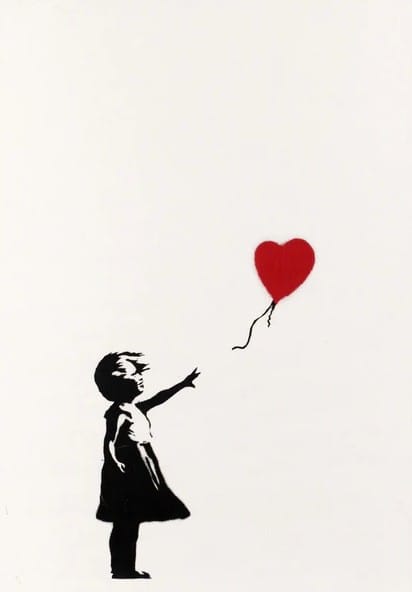
How It Entered the Global Stage:
- Major auction houses like Sotheby’s and Christie’s now sell street art pieces.
- Street art festivals and biennales are hosted in cities around the world.
- Governments and real estate developers commission murals for public beautification.
- Universities and art institutions include street art in their curricula.
Notable artists such as Banksy, Shepard Fairey, JR, RETNA, and Os Gemeos have propelled street art into the global spotlight with works that command six-figure prices and spark international conversations.
Cultural and Political Impact
Street art is more than just decoration—it’s a form of social commentary. Unlike gallery-bound art, it reaches everyday people where they live and work, often addressing urgent issues like:
- Gentrification
- Climate change
- Racial injustice
- Political corruption
- Gender equality
Because of its public nature, street art often serves as the voice of marginalized communities. It provides a space for dissent, pride, mourning, and resistance.
Case Study: Banksy’s Dismaland
This anti-theme park installation critiqued consumerism and political apathy, drawing global attention and media coverage. It blurred the lines between installation art and street art, redefining how such works are perceived.
Street Art as a Global Movement
Key Cities Leading the Street Art Scene:
- Berlin, Germany: Known for its post-wall explosion of creative expression.
- London, UK: A hub for Banksy and many stencil-based artists.
- Melbourne, Australia: Famous for its laneways filled with rotating murals.
- São Paulo, Brazil: Home to some of the largest and most vibrant street murals.
- New York City, USA: The birthplace of modern graffiti culture.
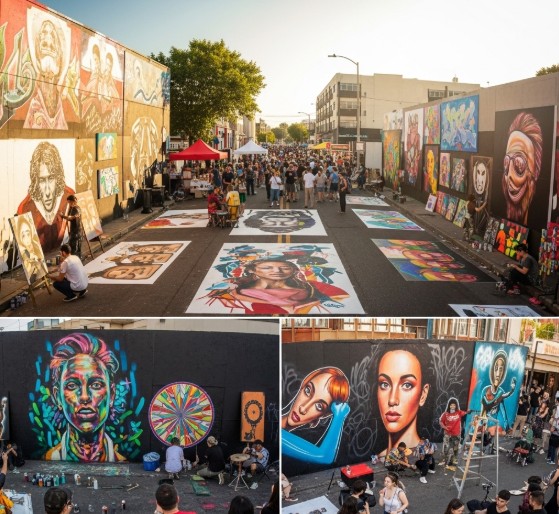
Street Art Festivals to Watch:
- Upfest (UK)
- Art Basel Miami’s Wynwood Walls (USA)
- Nuart Festival (Norway)
- Mural Festival (Canada)
These global events highlight the international demand and appreciation for street art, turning city walls into temporary canvases for cultural dialogue.
Technology and Street Art
The digital age has transformed street art in several ways:
- Social Media: Platforms like Instagram allow artists to share their work globally.
- Augmented Reality (AR): Some murals now include interactive digital elements.
- NFTs and Blockchain: Artists are minting digital versions of their street art, offering new ways to monetize and protect their work.
Check out this article on Street Art and Augmented Reality to explore how tech is reshaping the field.
From Illegal to Commissioned
Many street artists begin their careers as anonymous creators, but the path to legitimacy often leads to commissioned works, gallery shows, and brand collaborations. Brands like Nike, Adidas, and even luxury labels like Louis Vuitton have collaborated with street artists, bringing the genre even further into mainstream consciousness.
Example:
Shepard Fairey, creator of the iconic Obama “Hope” poster, now works on both street-level and institutional projects, bridging activism and commercial success.

Challenges and Controversies
Despite its growing acceptance, street art still faces obstacles:
- Legal Issues: Unauthorized works are still considered vandalism in many regions.
- Gentrification: Street art can ironically contribute to rising rents and displacement.
- Artistic Authenticity: Some critics argue that commercial collaborations dilute the message of street art.
These debates keep the art form dynamic and relevant, reflecting broader societal tensions.
The Role of ISKUSS in Promoting Urban Artists
At ISKUSS, we believe in celebrating all forms of artistic expression—including those found in the streets. Our platform showcases works by emerging street artists and connects them with collectors, curators, and institutions.
Visit ISKUSS to explore how street art is being integrated into the wider conversation about contemporary art.
Conclusion
The rise of street art in the global art scene is not just a trend—it’s a cultural shift. From alleyways to auction houses, this once-marginalized art form has become a central voice in today’s art discourse. As artists continue to push boundaries and leverage technology, the future of street art looks more vibrant and global than ever.
Whether you’re an artist, collector, or simply an admirer of bold creativity, street art offers a powerful lens through which to view the world. Keep your eyes on the walls—you never know where the next masterpiece will appear.
